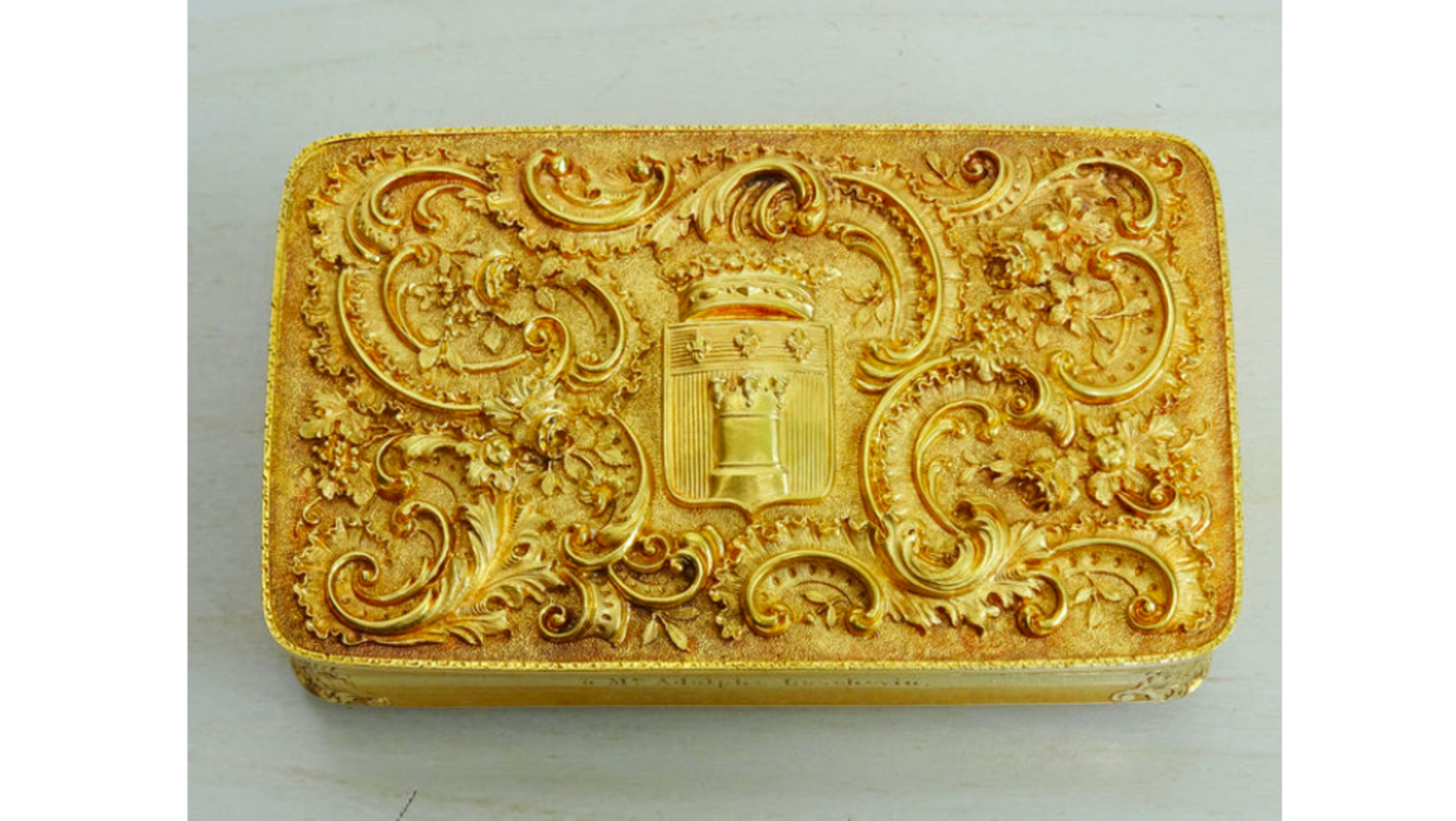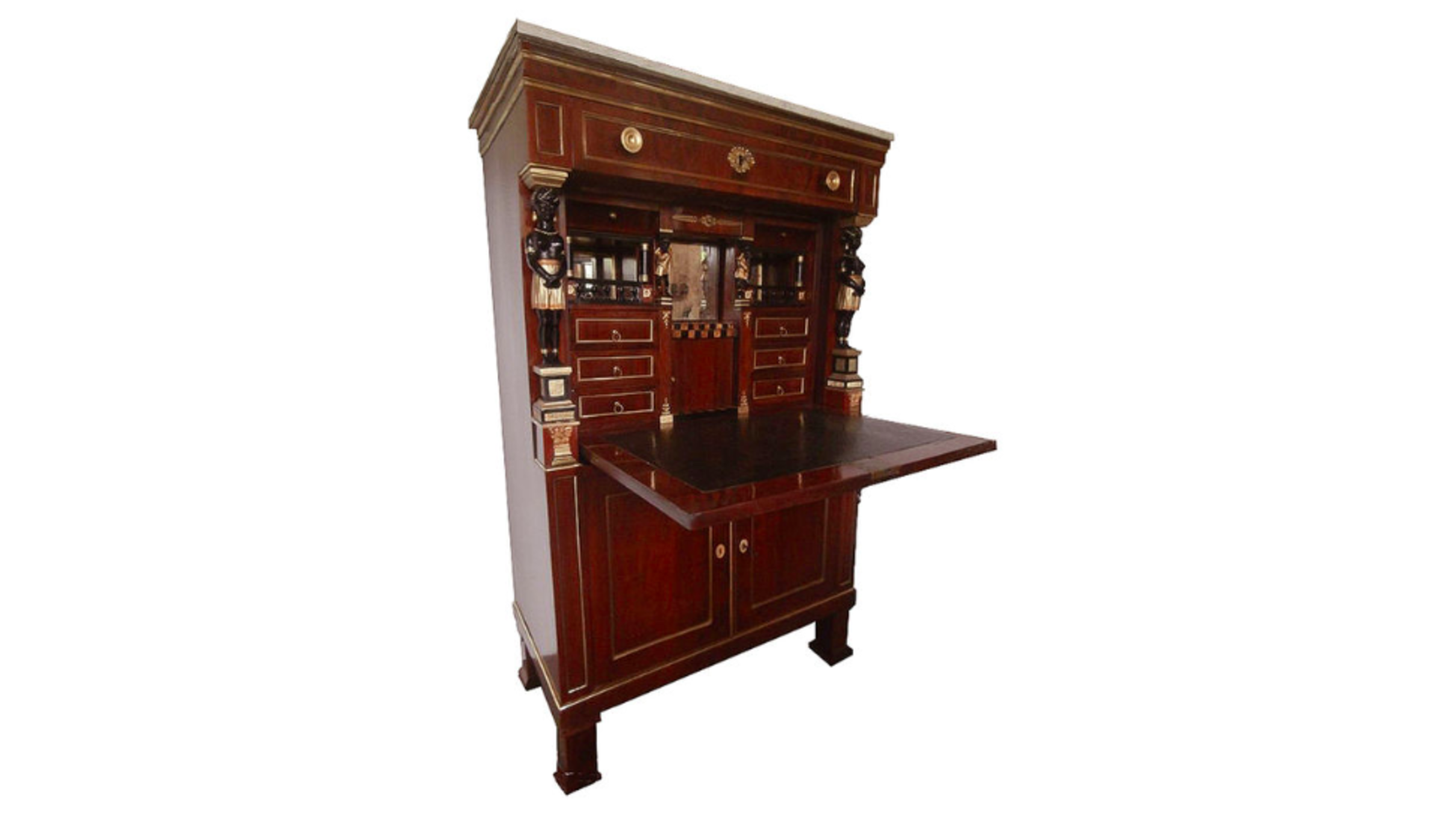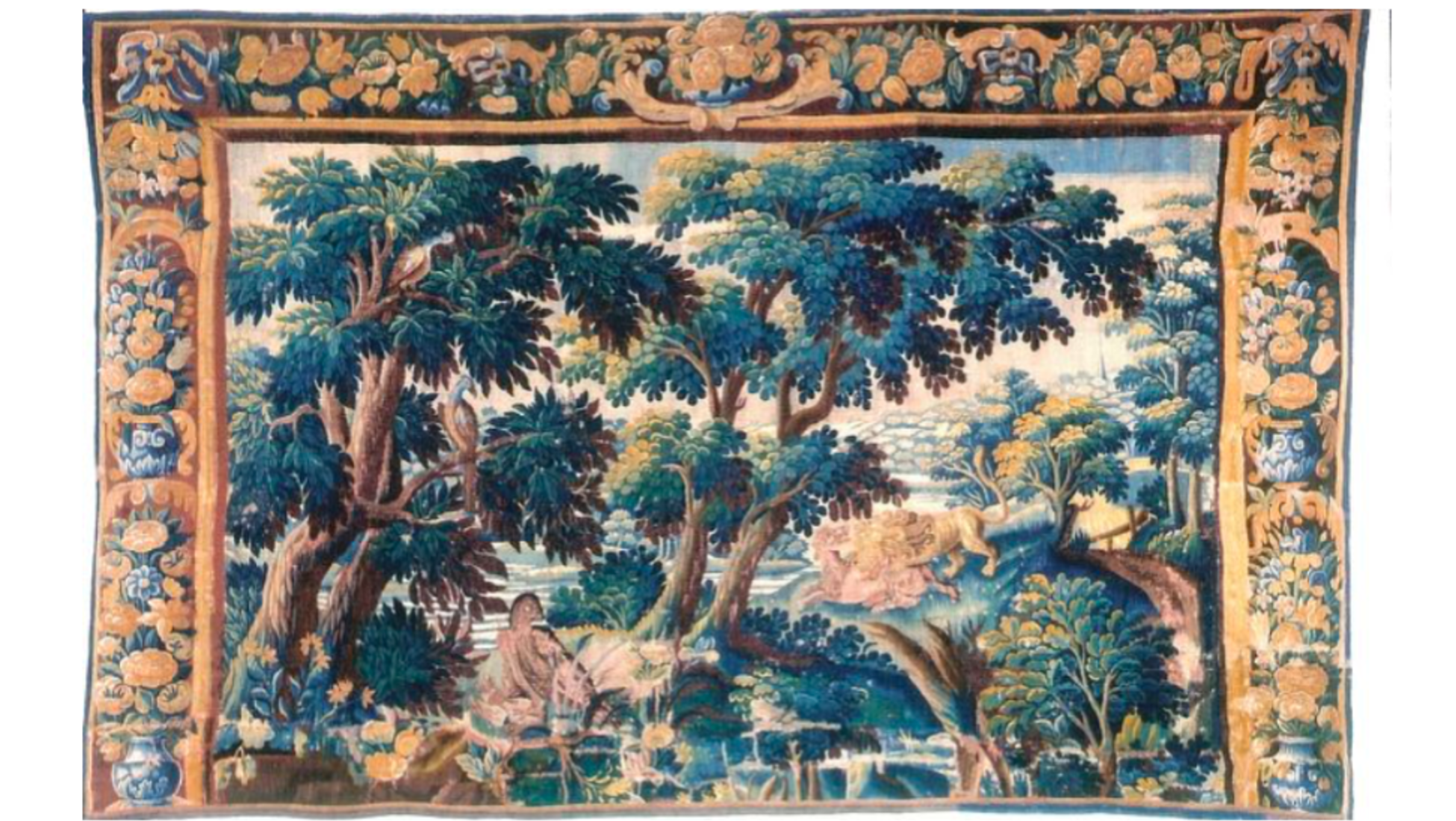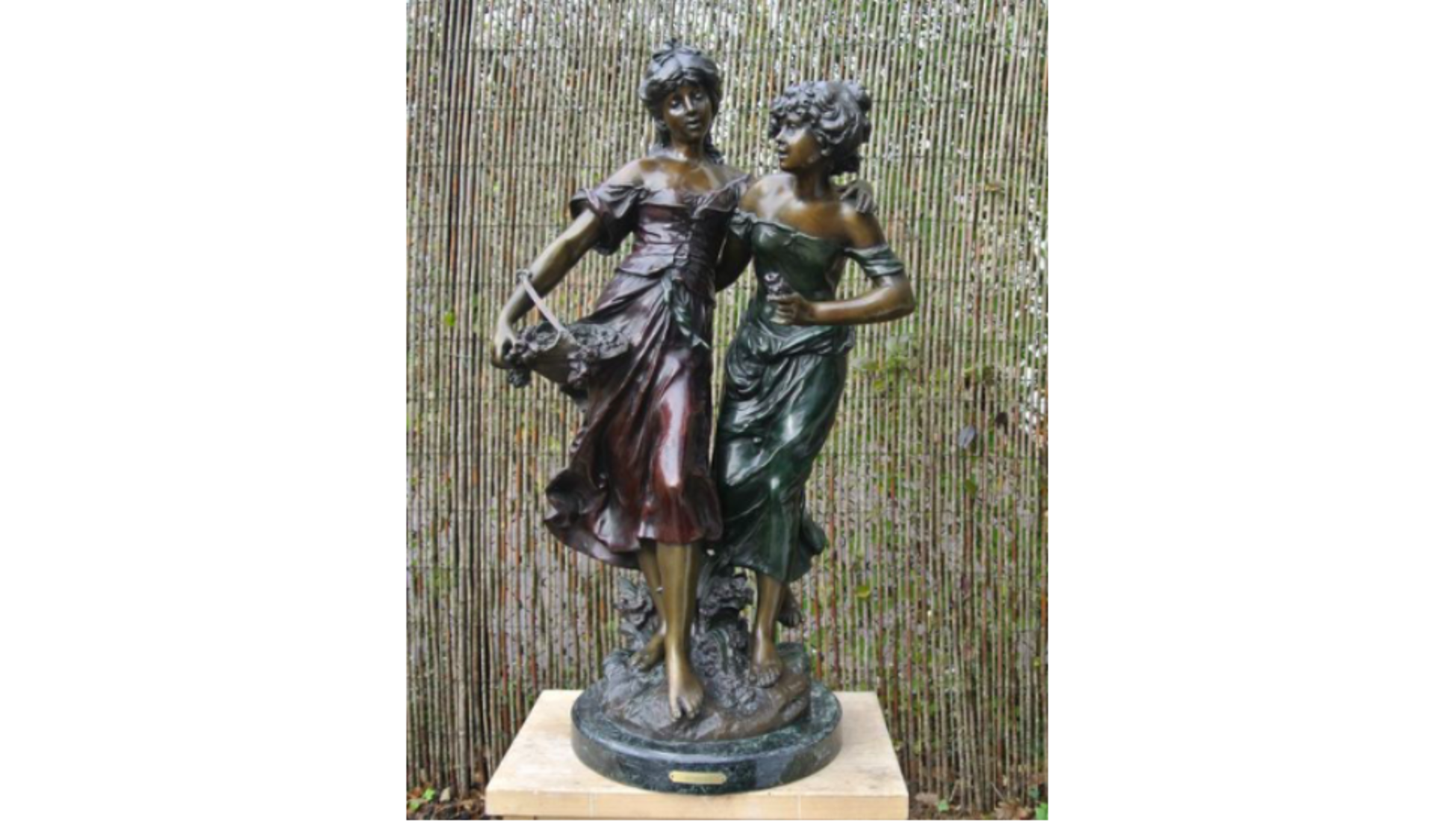Honestly, there’s no quick and easy answer to figuring out how much your antiques can be worth. Valuing antiques takes research and patience. However, our experts have shared their knowledge to get you started and give you an idea of what an item might be worth. But first, let's have a look at the the top 5 most expensive antique that have sold at our antiques auctions so far...
5. 18kt Gold Snuffbox - €4,600
This snuffbox was awarded to Mr. Adolphe Leschevin in 1842 by the Council of Burgomasters and Aldermen of the city of Tournai (Belgium), for the brilliant achievements of his students in the general contests between secondary schools. We think it's a particularly lovely piece.

4. Mahogany Cabinet - €5,600
This cabinet has a rectangular white marble top above a frieze drawer opening to reveal an interior of drawers and figurines. The partly burr maple and ebonised interior contains several secret compartments and green leather writing surface. Of course, the beauty of this cabinet is not secret - which is why it sold for €5,600 at auction.

3. Franco/Flemish Landscape Tapestry - €6,000
Franco/Flemish Landscape tapestry was woven within a 3-sided border (lacking lower border). Baroque 17th century Verdure tapestries were very popular and were woven from cartoons which were repeatedly used; therefore it is not always possible to date them exactly. The tapestries were woven in various provincial weaving centres including Oudenaarde where this tapestry was likely made.

2. Bronze A. Moreau Statue - €6,000
Made by Auguste Moreau, the statue sits atop a marble base and the bronze shows a lovely patina which has developed over time, adding even more character to these charming ladies.

1. Murano Glass Chandelier - €6,750
The number 1 spot in our list is reserved for this beautiful 12-armed chandelier and two wall sconces, hand-blown in Murano. The set was wired for electricity in the 20th century, and in 2006 it was updated to meet safety standard requirements.

How to Value Antiques Like a Pro
There are many factors to consider when deciding how much your antiques are truly worth. With a little work, patience, and research, along with these guidelines, you can learn to value antiques like a pro.
1. Condition
One of the most important factors people think of when thinking about evaluating an antique is the condition. Even when you locate your item in a price guide, if your piece doesn't hold equal status in terms of the state it is in, the given value can be questionable. Take all flaws into consideration, including chips, cracks, excessive wear, stains, and missing components. Is it a minor scratch or significant crack? Essentially, look for anything that keeps your antique from being new or 'mint' condition and take that into account when you determine the value.
2. Compare values
Experts often look at comparable models when appraising antiques. Looking at how much an item has sold for in the past can give an indication of what it might be worth today.
3. Old Doesn't Always Mean Valuable
Much of an item's value lies, of course, in the demand. There are many items over 100 years old now that aren't in high demand with collectors. If you own a hard to find piece from the 70s it can still hold a great value compared to an older item which is readily available.

4. Common or Rare?
There are circumstances when an extremely rare antique with some condition issues will still be worth quite a reasonable sum of money. For instance, if you own a piece of antique Delftware with a hairline crack, it may still be worth quite a nice sum. If you're not sure about how rarity plays a part into the area of your antiques, check with an expert in that field before abandoning a damaged item.
5. Restored or Repaired?
Believe it or not, professional restoration can really add value to a rare antique, but amateur repairs often affect value negatively. Therefore it's essential to evaluate a piece to spot whether it has been poorly repaired or the original value-adding patina has been eliminated through improper cleaning. If glue is visible, cracks are easily detected, or chips have obviously been ground down, the antique's value will likely decrease. However, minor repairs may not affect the value of a piece.

6. Ask Experts for Advice
Many times when you're watching antique appraisal shows, the appraiser often consults with their colleagues when determining the value. This happens in the non-television world as well. The experts here at Catawiki are always happy to have a look at what you have to offer and to offer their advice and opinions.
Now that you know a few steps the professionals follow when valuing antiques, you can do the same thing yourself and begin your journey into becoming an antiques trader. The next step is to become a seller at Catawiki and offer up your antiques for auction. Or if you're interested in browsing our Antiques auction, you can do so here.